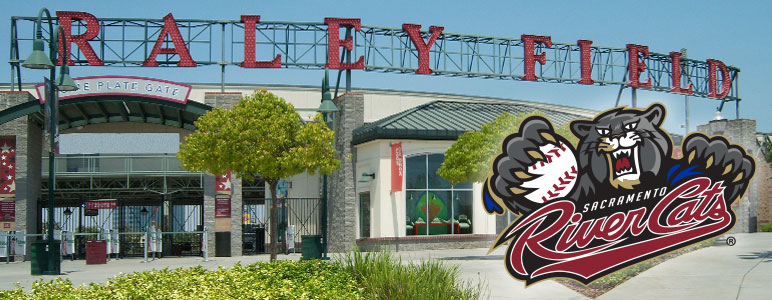


Sacramento River Cats fans will welcome a new addition to the Raley Field stadium when they show up for opening day in spring 2016: 472 solar photovoltaic modules producing an anticipated 247,000 kilowatt-hours of clean electricity each year. That’s equivalent to the annual power consumption of 23 American homes. The panels are installed on top of both clubhouses, the grounds building behind the left-center field wall and the stadium roof.
The River Cats, who are the Triple-A affiliate of the San Francisco Giants, had previously investigated the possibility of going solar. At the time, the consensus among management staff was to concentrate on conservation measures, such as an outdoor LED lighting retrofit. By the time the River Cats approached CSE, the lighting retrofit was under way.
CSE engineers convinced the organization take a closer look at solar by illuminating the fact that several factors made solar more attractive and immediate. We demonstrated how the lighting retrofit had modified their electricity profile, that system costs had declined and that key financial mechanisms, such as rebates, tax credits and favorable utility tariffs, would be coming to an end or changing.
With this new information in hand, the River Cats moved forward and procured a proposal from solar installer SUNworks. In doing due diligence, the organization again reached out to CSE’s engineering staff for some technical assistance in vetting the proposal and better understanding the expectations of owning and operating a solar PV system. This gave the River Cats the confidence to establish a partnership with SUNworks to install the on-site generation.
With the current market and incentives, the River Cats can expect their solar to pay for itself in four to five years. A lot of businesses and institutions have already gone solar to cut their utility bills, and many are now taking a second look before existing financial incentives change.
The solar panels are just one of several efforts the River Cats have made to conserve resources and reduce their environmental impact. Beyond the upgrade of more than 1,400 lighting fixtures to LEDs, they also have lowered their water use by 23 percent and installed green drop bins around the stadium to divert recyclables and food waste from landfills.
According to River Cats President Jeff Savage, they felt it was important to lead the path of sustainability in the Sacramento region and Minor League Baseball as a whole. Their goal is to educate other small businesses and individuals within the community on changes they can make to become more sustainable.
CSE is proud to be the River Cats’ energy evaluation partner.

